Digital collage is a versatile and engaging medium that allows artists to blend various elements into cohesive visual compositions. Whether you’re an aspiring artist or a seasoned creative looking to expand your skills, this step-by-step guide will help you master the art of digital collage. From gathering materials to finalising your masterpiece, we’ll walk you through the entire creative process.
Step 1: Gather Your Materials
Just like traditional art forms, digital collage requires a collection of materials, albeit in digital format. Here’s what you’ll need:
- Digital Images: Start with a collection of digital images, which can include photographs, illustrations, textures, and any visuals that inspire you.
- Graphic Software: You’ll need graphic design software like Adobe Photoshop, GIMP, or any software that allows for layering and blending.
- A Computer or Tablet: Ensure you have a reliable device with adequate processing power and storage to handle image editing.
- Graphics Tablet (Optional): A graphics tablet can make precise selections and edits easier, but it’s not essential.
Step 2: Select Your Theme and Concept
Before you dive into the digital canvas, have a clear theme or concept in mind. Think about the message or story you want your collage to convey. Your theme will guide your image selection and composition.
Learn more about…
- Collage Art Challenges: Join the Community and Get Inspired!
- Current Trends in Collage Art: A Comprehensive Overview
Step 3: Choose Your Digital Images
Now it’s time to curate your digital materials. Explore your image collection and select those that best fit your theme. You can use your own photos, free stock images, or purchased resources. Don’t be afraid to experiment and combine unexpected elements.
Step 4: Open Your Graphic Software
Open your chosen graphic software and create a new canvas or document. Set the canvas size and resolution to your preference; a higher resolution is better for detailed work.
Step 5: Layer Your Images
The magic of digital collage lies in the layering. Import your chosen images onto separate layers in your software. You can rearrange, resize, and rotate them as needed. Each layer represents a different visual element in your composition.
Learn more about…
Step 6: Blend and Mask
Experiment with blending modes and layer masks to seamlessly merge your images. Blending modes like Overlay, Multiply, and Screen can create interesting effects. Layer masks allow you to hide or reveal specific parts of an image, giving you precise control.
Step 7: Add Textures and Effects
Enhance your collage with textures or effects. You can use filters, gradients, or textures to add depth and visual interest to your artwork.
Step 8: Finalise Your Composition
Spend time refining your composition. Ensure that your elements flow harmoniously, and pay attention to details. Add any text or typography if it fits your concept.
Step 9: Save Your Work
Save your digital collage as a high-resolution file for printing or sharing online. Common file formats include JPEG and PNG.
Step 10: Share and Showcase Your Art
Share your digital collage on social media, online art communities, or your personal website to showcase your work and receive feedback from other artists and art enthusiasts.
Practice Makes Perfect
Remember, like any art form, mastering digital collage takes practice. The more you experiment and create, the more proficient you’ll become. Don’t be afraid to push your creative boundaries and explore new techniques. Over time, you’ll refine your skills and develop a unique style that sets your digital collages apart.
Digital collage offers an exciting and boundless creative journey, where you can blend diverse elements into cohesive visual stories. So, gather your digital materials, open your graphic software, and embark on your path to mastering the art of digital collage. Your unique creations are just a few clicks away.

